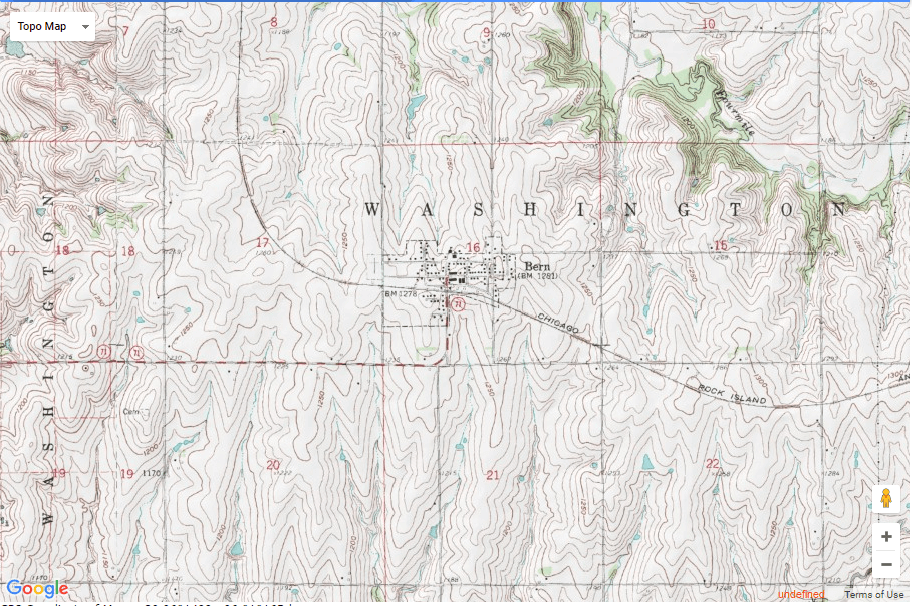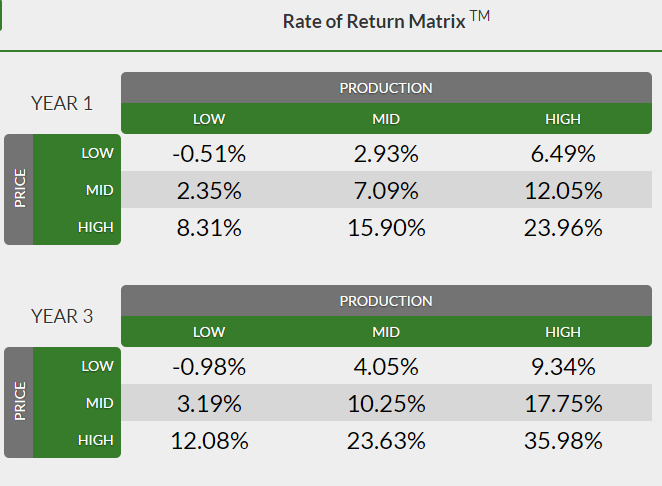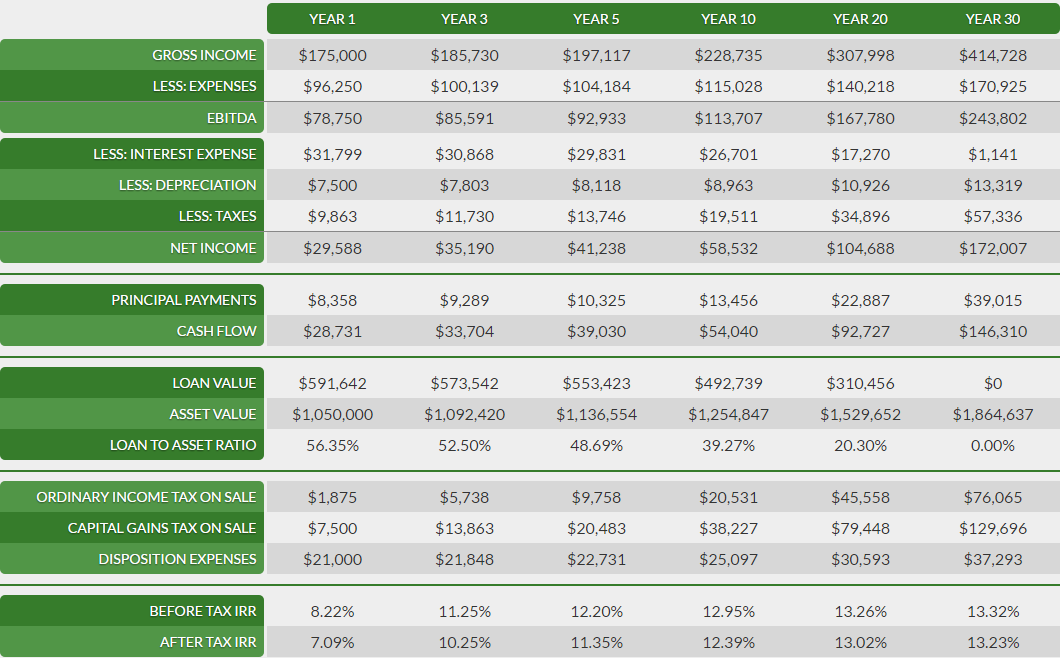Ways to Find Farmland - Locate Locate Locate
Alright, it’s not the same as location...but it sounded good. And perhaps it's just as important since it is the first part of the buying process.
Look For Farmland Online
-
LandWatch.com is a one stop site for all things land. At the time of this writing, they had nearly 1,500,000 land listings just in the U.S. alone.
-
LandandFarm.com is another premier land listing site. They have just over 500,000 U.S. listings. Talk about having plenty of land to choose from.
-
Farms.com - This is a great place to find local or regional auctions and estate sales. Just use their Auction locater tool to find an auction near you or in your target area. This can be a great way to find land that may be less marketed with less competition from other buyers.
-
LandsofAmerica.com is another listing site where you can find land for sale. It’s not as big as other sites, but that can be good in the case of finding deals.
-
LandLeader.com claims to partner with local and regional brokerages in order to offer properties that are solely and exclusively sold on their site. You can trust that properties found here, won’t be found on any other site.

Talk to a Farmland Realtor
This one is obvious but sometimes it’s worth it to let a professional do the heavy lifting for you. And for something as large as a land purchase, it may be worth it to have a full time more experienced advocate on your side.
Read The Local Newspaper
You can always count on local auctions and land sales being listed in your local community newspaper.
There may also be larger regional newspapers with auctions and land sale listings. When I was growing up, Green Acres and the Penny Press both served as a regional resource for land and estate sales and auctions.
County Ownership Plat Book - County Assessor’s Office - Google Earth - USGS Topography Maps
For the younger readers, you may only recognize Google Earth, but for the older more experienced among us, these resources are pure gold.
This is where someone can really get their hands dirty to find that perfect piece of land at the right price. Although you won’t find land that is “listed for sale,” it’s true what they say, “everything is for sale at the right price.” And you never know who might be interested in selling their land and at what price they would sell it for.
For those that don’t know what a County Plat Map looks like, here is an example.

A plat map simply divides out the land by who owns it as you can see above. Each county in the US keeps an updated land plat map.
If you find a piece that you might be interested in on the plat map, you can look it up at your local county tax assessor’s office to get some more details on the land. Details such as owner’s name, owner’s address, and the assessed value of the property.
Each county assessor’s office is different. Some allow you to access all of the information for free via some online application. Others will require you to fill out an information request form. It just depends on the county.
Lastly, you can use Google Earth as well as USGS Topography Maps to see the “lay of the land.” These will allow you to see if the land is farmable, or if it is covered in brush, or if the gradient of the land is too steep for farming.
Trimble also offers a great free topographic map service that you can find here. Here's a quick example of a topography map.

How to Evaluate Prospective Farmland For Sale
Now that we’ve located some land buying options, we need to evaluate those options to see which one will be the best purchase for the money.
Talk to the Seller
First, and perhaps the most obvious, is you’ll want to talk to the person selling the land. You’ll want to pepper them with questions to gain an understanding of the land’s productivity potential.
You’ll want to know information on soil type. Soil type may include ph of the soil, or fertility of the soil, or the porosity of the soil. A farmland investor will need to become a scientist of sorts.
You’ll want to know historical yield and crop information to know what the land’s capable of producing.
It will be good to know what tactics the previous farmer was using to increase production. Its possible you may know of some tactics that will work that that farmer hasn’t used.
All of these questions are centered around productivity with the purpose of discovering if the land productivity value can increase after you purchase the land.
Talk to Surrounding Land Owners or Neighbors
Next, you’ll want to talk to surrounding landowners to fact check the information you just received from the seller. The seller may try to hype up the productivity of the land when it’s really not as productive as they say.
Asking all the same questions to surrounding landowners can increase your confidence in the price you offer for the land. However, the caveat is that these landowners may also be interested in purchasing the land themselves. Be aware, they may be your competition without you knowing it.
Talk to a Local Real Estate Broker
It may be valuable to talk to, or hire a local real estate brokerage firm to learn about recent land sales. This will help you know what land previously sold for in the area. If they specialize in farmland, then they will probably have information about the land’s fertility and productivity as well.
Use online resources to gather data
-
Historical Crop Planting - This is an interactive map provided by the United States Department of Agriculture that shows what crops were planted where in the United States. You can use this resource to find out what was planted on the land in previous years.
-
Historical Land Values - This is a resource provided by the USDA again. Use this to find historical land values by state and by US as a whole. Land value can still vary drastically from one end of a state to the next. You’ll want a way to discover land values on a more local level.
-
Acrevalue.com - Acrevalue.com compiles data from free available public sources(soil surveys, crop prices, interest rates, etc.) to create an estimated market value for farmland. If you’ve ever used Zillow and their “Zestimate.”, Acrevalue.com is the aspiring Zillow of agricultural farmland.
-
ArcGIS - ArcGIS describes themselves as the complete, cloud-based mapping platform. This particular map features the Soil Survey Geographic (SSURGO) by the United States Department of Agriculture's Natural Resources Conservation Service. It also shows data that was developed by the National Cooperative Soil Survey and supersedes the State Soil Geographic (STATSGO) dataset published in 1994. It was created for several reasons but particularly for landowners so they can know the composition of their soil.
-
USDA Historical Crop Yields If you haven’t realized by now, the USDA provides a wealth of free statistical information. Here is one more place that they allow you to look at historical crop yields by county.
-
Visit your local state agricultural college website to gather more local information. For example, Iowa State does a fantastic job gathering all sorts of data. Here is one example where they conduct and compile soil surveys. They call it ISPAID(Iowa Soil Properties and Interpretations Database)

Conduct Economic Analysis
To conduct good economic analysis, you will either need a very high tech spreadsheet, or you’ll need to find some software to do the economic analysis for you. We recommend our farmland investment calculator to help you do the analysis.
In order to do an economic analysis, you will need to use some of the information you may have already gathered as well as additional information.
First, you’ll need to estimate how much the land will cost as well as how you will finance the land. Will you pay 100% cash, all debt, or somewhere in the middle?
Next, you’ll need to estimate the revenue you are projected to receive from the land. This can be done very easily by projecting the number of bushels per acre you expect to produce and the number of farmable acres there are on the land. Use resources that you may have gathered from above to enter projected production.
Here's a tip: Use this farmland calculator to enter a low, mid, and high production projection per acre since we never know if the weather will be ideal.
You also don’t know what crop prices will be. This calculator will let you enter a low, mid, and high price projection as well so that it will calculate a rate of return for each combination.
Third, you’ll need to project your expenses. How can you know what your expenses will be? Here are some resources to help you.
-
State funded agricultural colleges will typically track what farm production costs were the previous year. And they provide a wealth of other resources too. Iowa State does a fantastic job of this. Here are some of their spreadsheets outlining crop production costs.
-
Farmersbusinessnetwork.com allows you to find the best prices for all of your farm inputs in seconds by pooling together the buying power of farmers both large and small. But you’ll have to be a member to get the best prices. They are like the Costco of farming.
-
Talk to local vendors to find out pricing for farm inputs. This can be time consuming as you may need to talk to several different vendors.
-
When in doubt, Google it.
Now that you have the necessary information to conduct your economic analysis, familiarize yourself with our farmland calculator and understand how to calculate your rate of return. Our farmland investment calculator takes all of the data that you just entered and ultimately calculates the projected rate of return over time.
It also takes those low, mid, and high crop price and production projections and calculates a rate of return for each combination in the rate of return matrix as seen below.

Now once you enter in all your projections, try changing the purchase price of the land and the financing information to see how that affects your rate of return.
If all of this economic feasibility analysis stuff is too much for you...then try this simple calculation.
LAND VALUE ($/acre) = ANNUAL NET INCOME ($/acre) / REQUIRED RATE OF RETURN (%)
This formula is certainly not an exact science to say the least but it can provide a benchmark. Even if you use this formula, you will still need to project your net income so it would be just as easy and definitely more accurate to use the farmland calculator we provide.
Be sure to refer to the bottom of this article where we will provide more information about our Farmland Calculator (FarmlandROR).
Purchasing the Farmland
Finding Farm Financing
- Government Loan Programs - Use the USDA Farm Service Agency Loan programs to find the right government loan program for you. They offer very competitive interest rates as you’ll see below and a variety of different programs for farmers at every stage of growth.
-
Government Grants - Look into getting grants from the government to get started.
-
Visit your local bank to see if they are willing to lend to you.
-
Check out farm specialty banks such as Farm Credit Services or AgStar.
- Use a good land loan calculator to help determine how much land you can afford.
Getting a Farmland Appraisal
Your bank may require you to obtain an appraisal from an independent third party before extending financing to you. Hopefully they will rely on research you’ve already done and any research your realtor has already done in order to extend financing.
Making the Offer
Always be sure to put your offer in writing unless you are purchasing via auction in which some kind of contract may be required to be signed ahead of time.
If you are working with a realtor, most of the work will be done for you, but if not, you may want to hire a real estate professional of some kind to draft the legal documents so that everything is in good order.
Always remember the elements to a binding contract:
-
Offer
-
Acceptance
-
Consideration
-
And Intention of Legal Consequence
Transferring the Land Deed
Once the offer is accepted, and payment is made (put in escrow) the process by which the land deed is transferred can begin. You’ll want to hire a professional service to do this but here is an article that gives some general advice.
And there you have it...some tips, pointers and resources for the next time your purchase farmland.
Be sure to leave us a comment in the section below. If we’ve left something out or there’s something you’d like to add, be sure to comment that in the section below as well.
Here are some added bonuses when you subscribe to our farmland calculator.
-
Ad free service
-
Save client case details
-
Email links with saved client case details
- Self brand the calculator to your company
It's perfect for farmland lending professionals.



